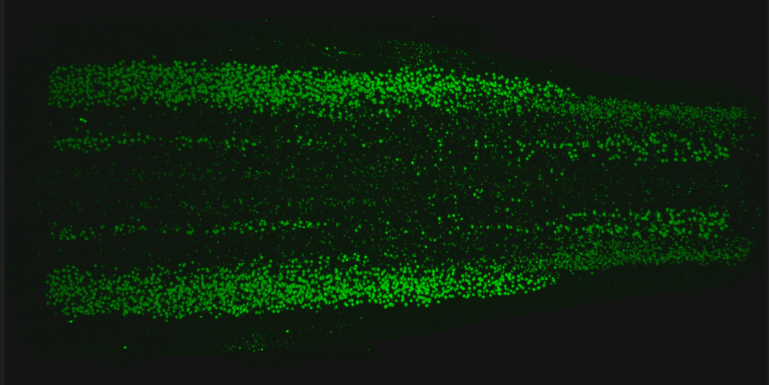Mouse study provides atlas to pinpoint neurons involved in neurodegenerative diseases

Credit: NICHD/NIH
WHAT:
In a mouse study, National Institutes of Health researchers have identified and mapped a diverse spectrum of motor neurons along the spinal cord. These neurons, which send and receive messages throughout the body, include a subset that is susceptible to neurodegenerative diseases. Created with a genetic sequencing technique, the atlas reveals 21 subtypes of neurons in discrete areas throughout the spinal cord and offers insight into how these neurons control movement, how they contribute to the functioning of organ systems and why some are disproportionately affected in neurodegenerative diseases.
The study was led by Claire Le Pichon, Ph.D., head of the Unit on the Development of Neurodegeneration at NIH’s Eunice Kennedy Shriver National Institute of Child Health and Human Development (NICHD). It appears in Nature Communications.
Spinal cord neurons are responsible for all types of movement in the body, ranging from voluntary movements like walking to the involuntary constriction and relaxation of the stomach as it processes its contents. Traditionally, scientists categorize these neurons into three main types: skeletal motor neurons, visceral motor neurons and interneurons. Previous research suggests there are additional subtypes within these three categories and that some of these subtypes may be more vulnerable to neurodegenerative diseases than others. For example, diseases like spinal muscular atrophy and amyotrophic lateral sclerosis, or ALS, affect only certain types of skeletal muscle neurons.
In the current study, the team used a technique called single nucleus RNA sequencing to identify 21 subtypes of spinal cord neurons in mice. The findings reveal highly distinct subtypes, especially among motor neurons that control the glands and internal organs. The team also discovered that visceral motor neurons extend higher up along the spinal column than previously known. The authors believe these motor neurons may be newly discovered subtypes with unknown functions.
The team has provided all the study data online at http://www.spinalcordatlas.org 
WHO:
Claire Le Pichon, Ph.D., Head of the NICHD Unit on the Development of Neurodegeneration and senior study author, is available for interviews. To arrange an interview with Dr. Le Pichon, email nichdpress@mail.nih.gov or call 301-496-5133.
REFERENCE:
Alkaslasi MR, Piccus ZE, Hareendran S, Silberberg H, Chen L, Zhang Y, Petros TJ, and Le Pichon CE. Single nucleus RNA-sequencing defines unexpected diversity of cholinergic neuron types in the adult mouse spinal cord. Nature Communications DOI: 10.1038/s41467-021-22691-2 (2021)
###
About the Eunice Kennedy Shriver National Institute of Child Health and Human Development (NICHD): NICHD leads research and training to understand human development, improve reproductive health, enhance the lives of children and adolescents, and optimize abilities for all. For more information, visit https://www.nichd.nih.gov.
About the National Institutes of Health (NIH): NIH, the nation's medical research agency, includes 27 Institutes and Centers and is a component of the U.S. Department of Health and Human Services. NIH is the primary federal agency conducting and supporting basic, clinical, and translational medical research, and is investigating the causes, treatments, and cures for both common and rare diseases. For more information about NIH and its programs, visit https://www.nih.gov.

 BACK TO TOP
BACK TO TOP